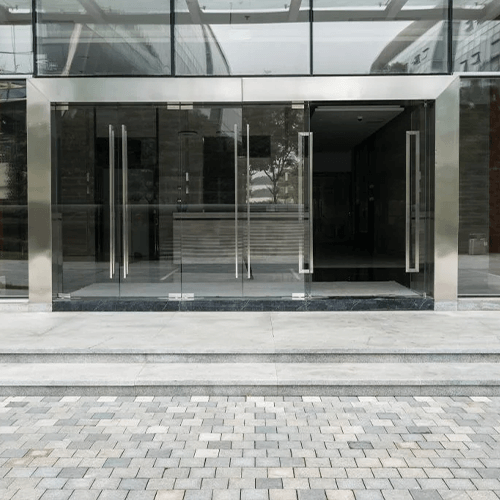For many commercial properties, storefront doors are a crucial component of the building's energy efficiency. These doors play a significant role in preventing air leakage and heat transfer, which can have a significant impact on a building's energy bills. Choosing the right commercial storefront door can help maximize energy efficiency, reduce operating costs, and improve indoor comfort. In this blog post, we will explore the importance of energy efficiency for commercial storefront doors and provide tips on how to choose a door that helps reduce energy costs.
Why Energy Efficiency Matters
Energy costs can make up a substantial portion of a building's operating expenses. A poorly insulated or inefficient door can lead to significant heat loss or gain, which can increase energy costs and reduce indoor comfort. By choosing an energy-efficient door, businesses can reduce energy costs, improve indoor comfort, and reduce their carbon footprint.
Types of Energy-Efficient Storefront Doors
There are several types of energy-efficient storefront doors available, each with their unique benefits and features. Here are a few of the most common options:
- Insulated Glass Doors: These doors feature multiple layers of glass with an insulating air or gas layer in between. Insulated glass doors offer excellent insulation properties, reducing heat transfer between the interior and exterior of the building.
- Automatic Doors: Automatic doors are an excellent option for commercial properties that require frequent access. These doors feature sensors that detect foot traffic, allowing them to open and close automatically. This feature helps prevent air leakage and ensures that the door remains closed when not in use.
- Low-E Glass Doors: Low-emissivity (low-e) glass doors feature a coating that reflects heat, reducing heat transfer and improving energy efficiency. These doors are ideal for commercial properties that receive a lot of sunlight, as they can help reduce solar heat gain.
- Revolving Doors: Revolving doors are an excellent option for commercial properties with high foot traffic. These doors feature a rotating central chamber that separates the interior and exterior environments, reducing air leakage and heat transfer.
Choosing an Energy-Efficient Storefront Door
When selecting an energy-efficient storefront door, it's essential to consider several factors, including:
- Insulation: Look for doors with good insulation properties to minimize heat transfer and reduce energy costs.
- Air Leakage: Choose a door that has low air leakage rates to prevent drafts and maintain indoor comfort.
- Glass Options: Consider the type of glass used in the door and its insulation properties.
- Size: The size of the door can also impact energy efficiency. Choose a door that is appropriately sized for the building to minimize heat loss or gain.
- Installation: Proper installation is critical for maximizing energy efficiency. Choose a reputable contractor to ensure that the door is installed correctly and that there are no air leaks or gaps.
Energy efficiency is a critical consideration for any commercial property, and storefront doors are no exception. By selecting an energy-efficient door, businesses can reduce operating costs, improve indoor comfort, and reduce their carbon footprint. Contact CDF Distributors today to make energy efficiency a priority, and to create a more sustainable and cost-effective building.
